The Ultimate Guide To Backpacks For Kids: Back-To-School 2025 Edition
Reviewed by: Dr. Dustin DebRoy, D.C.
By: Janett King

Back-to-school season is the perfect time to give your child a fresh start. New goals, new supplies, and the right backpack can set the tone for a healthy, successful year. Whether your child is heading into kindergarten or navigating middle school, their backpack does more than carry books. It plays a key role in posture, spinal alignment, and long-term comfort.
In this 2025 guide, you'll find the best backpacks for kids, along with chiropractor-backed tips on how to choose, pack, and wear them to support spinal health and everyday comfort.
Top backpack styles for kids in 2025
There is no one-size-fits-all solution when it comes to school backpacks. The best backpacks for kids in 2025 are designed to support growing bodies while standing up to the demands of the school year. They need to offer structure, comfort, and function in equal measure, especially as students begin carrying more books, devices, and supplies throughout the day.
Here are some of the most popular and ergonomic backpack styles to consider:
- Classic two-strap backpack: This is the go-to choice for most school-aged children. It evenly distributes weight across both shoulders and supports a healthy posture. Look for padded, adjustable straps and a cushioned back panel for all-day comfort.
- Wheeled backpack: Ideal for students who carry heavier loads or walk long distances to school. A wheeled design allows your child to roll the backpack rather than carry it, helping to reduce the strain on their back and shoulders.
- Mini backpack: Best for preschoolers and younger elementary students with light daily needs. These smaller backpacks are easier to manage, but they should still offer enough structure to avoid sagging or imbalance.
- Laptop backpack: For older kids who carry tablets or laptops, a padded electronics compartment is essential. This style also offers better internal organization and helps evenly distribute weight across the back.
- Drawstring bag: Great as a secondary bag for gym clothes or after-school activities. While convenient, drawstring bags lack the structure and support needed for daily academic use and should not replace a properly fitted backpack.
Choosing the right style depends on your child’s age, schedule, and needs. A younger child may benefit from something lightweight and playful, while a middle schooler might require more organization and tech protection. No matter which style you choose, be sure it fits your child’s frame and provides support in all the right places. A well-designed backpack helps your child stay focused and comfortable from the first bell to the final pickup.
How to protect your child’s spine: Backpack tips from chiropractors
Millions of students return to school each year with backpacks that are too heavy, poorly fitted, or worn the wrong way. Over time, this can affect posture, lead to back or neck discomfort, and contribute to muscle fatigue or strain. Spinal health should be part of every family's back-to-school checklist.
"Every year, as children return to school, they reintroduce their bodies to routines like sitting at desks, carrying heavy backpacks, and participating in after-school sports," said Steven Knauf, D.C., vice president of chiropractic and compliance at The Joint Chiropractic. “To help your child maintain spinal wellbeing and avoid issues, it's crucial to ensure their backpacks are used properly..”
Here’s how to help your child stay safe and supported:
- Backpack size matters: Choose a backpack that fits your child’s frame. It should not be wider or longer than their torso and should sit no lower than two inches below the waistline.
- Shoulder straps are key: Look for wide, padded, and adjustable shoulder straps. Always encourage your child to wear both straps to avoid uneven weight distribution.
- Stick to the weight limit: A backpack should not exceed 10 to 15 percent of your child’s body weight. For example, a 60-pound child should carry no more than six to nine pounds. If the load feels too heavy, consider using a wheeled backpack or offloading non-essential items.
- Adjust for support and balance: Make sure the shoulder straps are snug but not tight. If the backpack comes with a waist or chest strap, encourage your child to use it. These extra straps help stabilize the backpack and reduce strain on the spine and shoulders.
- Teach good habits early: Remind your child not to sling their backpack over one shoulder, even if it's convenient. Wearing it properly from the start builds healthy habits that can last into adulthood.
When it comes to backpacks, small adjustments make a big difference. Choosing the right size, distributing weight properly, and encouraging consistent use of both straps can help your child avoid unnecessary strain. By making backpack safety part of your school routine, you’re supporting better posture, reducing the risk of injury, and helping your child feel better throughout the day.
How to pack a backpack for school without causing back pain
Packing a backpack correctly is just as important as choosing one that fits. Even the best backpacks for kids can lead to discomfort or injury if they are packed haphazardly. An overloaded or unevenly packed bag can pull the spine out of alignment, strain muscles in the neck and shoulders, and contribute to poor posture throughout the school day.
Use these chiropractor-approved strategies to help your child pack with care:
- Pack heavy items close to the back: Heavier supplies like textbooks, binders, or laptops should be placed against the back panel of the backpack. This keeps the center of gravity closer to the spine, which reduces the chance of slouching or muscle strain. Lighter items should go toward the front of the bag.
- Use compartments to balance weight: Many backpacks have multiple pockets and compartments. Use them strategically to distribute supplies evenly from left to right, making sure one side of the backpack does not carry more weight than the other. Balanced packing supports even muscle engagement and reduces spinal stress.
- Stack items flat and vertically: Place books or folders flat against each other instead of leaning or tilting them. A vertical stack helps prevent shifting while your child walks and keeps the bag structured and stable.
- Limit non-essentials: Encourage your child to clean out their backpack weekly. Water bottles, toys, snacks, or extra supplies may accumulate without notice and add unnecessary weight. Pack only what is needed for the day.
- Secure small items in designated pockets: Pens, calculators, notecards, and smaller tools should be stored in designated compartments or zippered sections. This prevents them from moving around, which can throw off balance and increase wear on the backpack’s seams.
- Use a lunchbox instead of packing food in the bag: If your child brings lunch, consider having them carry a separate, insulated lunchbox. This keeps weight out of the main backpack and avoids spills or added bulk in tight compartments.
Packing a backpack may seem like a simple task, but it plays a crucial role in protecting your child’s back, shoulders, and overall posture. A well-packed bag distributes weight evenly, prevents overloading, and reduces the risk of long-term discomfort. By teaching your child how to pack their backpack properly, you're setting them up for a healthier school experience and building habits that will benefit them for years to come.
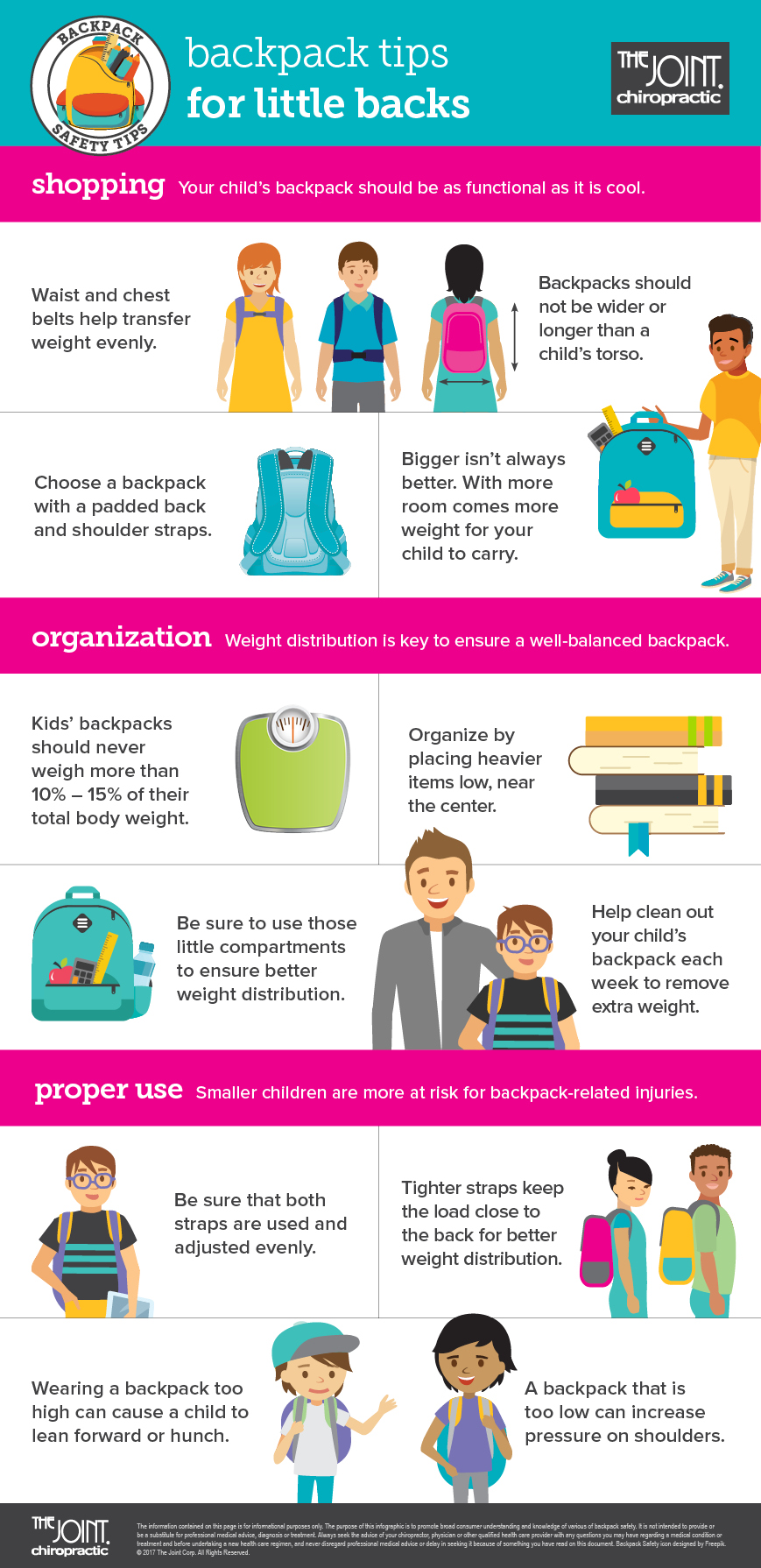
Best backpacks for kids in 2025: Top-rated picks for every age and stage
Choosing the right backpack can feel overwhelming, especially with so many options on the market. To make your decision easier, we’ve curated a list of five of the best backpacks for kids in 2025, based on comfort, durability, ergonomics, and real-world use. These models consistently receive high marks from parents, teachers, and healthcare professionals, including chiropractors who prioritize spinal alignment and muscle support.
Whether your child is heading into preschool, elementary school, or middle school, these backpacks offer practical features that help reduce strain and keep them organized throughout the day.
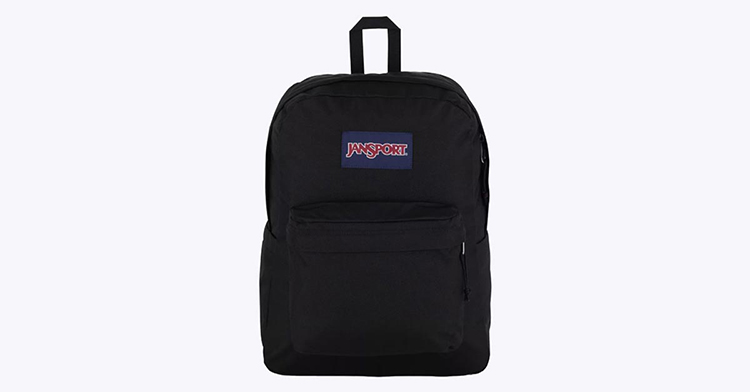
JanSport SuperBreakⓇ Plus
A tried-and-true favorite, this lightweight backpack combines classic design with modern function. It features padded shoulder straps, a spacious main compartment, and an internal sleeve that fits most laptops or tablets. The simple structure makes it easy for kids to pack smart without overloading.
Available on the JanSport website.
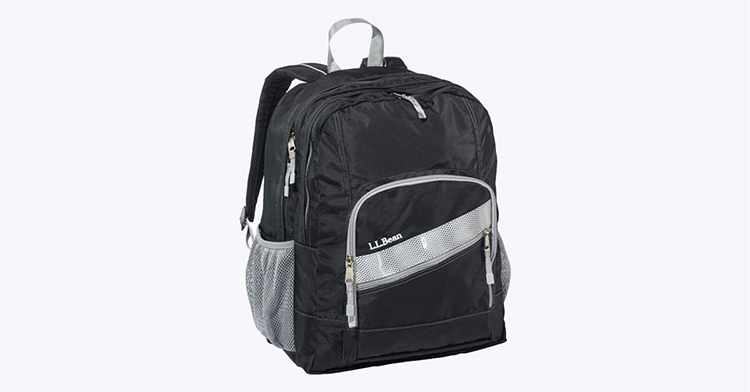
L.L.Bean Deluxe Book Pack
Known for its exceptional durability, this backpack is built to last beyond the school year. It includes multiple compartments, padded and curved straps for shoulder comfort, and a water-resistant finish for rainy-day reliability. The back panel is also padded, offering consistent support for growing kids.
Available on the L.L.Bean website.
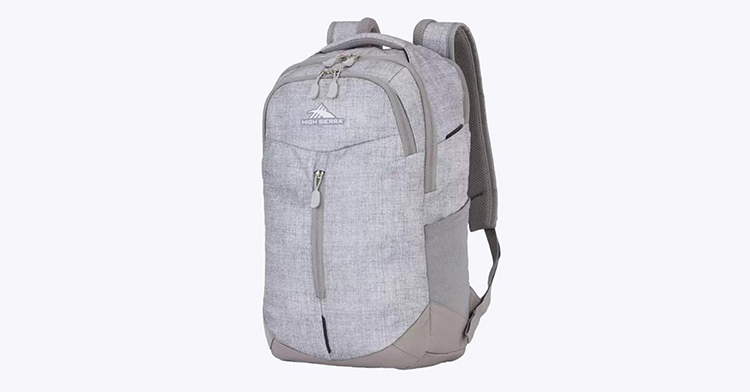
High Sierra Swerve Pro Laptop Backpack
This structured backpack is ideal for older children who carry heavier or more tech-focused loads. It includes a dedicated laptop compartment, a fully padded back panel, and contoured straps that help distribute weight evenly. The reinforced bottom adds to its long-term wearability.
Available on the High Sierra website.
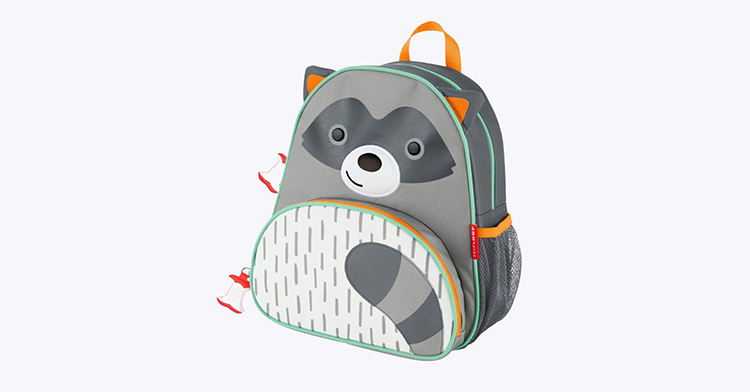
Skip Hop Zoo Backpack
Designed specifically for preschoolers and kindergartners, this small-but-mighty backpack is sized just right for little shoulders. It fits lunchboxes, folders, and a favorite toy or two without overwhelming the child’s frame. The fun animal-themed designs make it a favorite among little ones.
Available on the Skip Hop website.
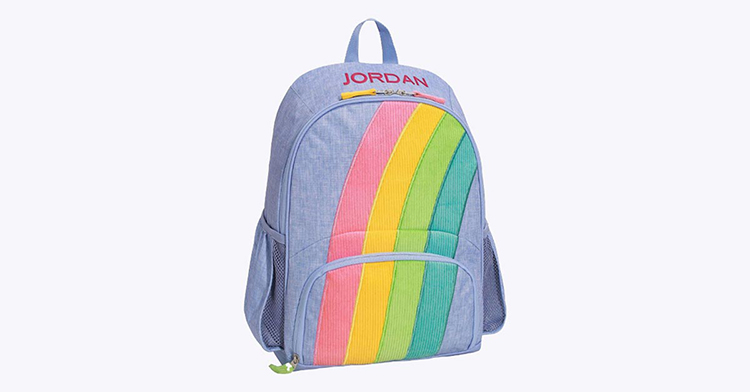
Pottery Barn Kids Mackenzie Backpack
This well-loved option comes in multiple sizes to suit toddlers through tweens. It includes padded shoulder straps, a chest strap for added support, and thoughtful compartments to help kids stay organized. The durable material resists tears, spills, and everyday wear.
Available on the Pottery Barns Kids website.
Important safety reminder: Never personalize your child’s backpack with their name on the outside. While it may seem like a fun or convenient touch, it can make your child an easier target for strangers who may try to use their name to gain trust. Opt for name labels on the inside of the bag instead.
These backpacks represent some of the most reliable and supportive options available for students in 2025. While features like padded straps, laptop sleeves, and water resistance are important, fit and function should always come first. Choose a backpack that matches your child’s body size and daily needs, and avoid oversized or overly trendy bags that may sacrifice comfort for style.
Is your child’s backpack causing their back pain?
Back pain is not just an adult problem. Many school-aged children experience discomfort in their neck, shoulders, or back during the school year, and one of the most common causes is an ill-fitting or overloaded backpack. With more than 54 million students enrolled in U.S. schools, it is no surprise that backpack-related pain has become a growing concern for parents, educators, and healthcare professionals alike.
Children’s spines are still developing, and carrying excess weight or wearing a backpack incorrectly can lead to poor posture, muscle strain, and long-term alignment issues. Most of these problems are preventable with the right equipment and daily habits.
The most common backpack mistakes include:
- Wearing only one strap: Using one shoulder strap instead of two places uneven pressure on the spine, causing the body to lean and twist. Over time, this habit can lead to imbalances in muscle strength and posture.
- Carrying too much weight: Many children pack more than they need each day. Extra textbooks, toys, or supplies can add unnecessary stress to the back and shoulders. A backpack should never exceed 10 to 15 percent of your child’s body weight.
- Wearing a backpack that does not fit: Backpacks that are too large, too long, or poorly adjusted can cause the load to sit too low or too far from the body. A proper fit keeps the weight close to the spine and evenly distributed.
Parents play a key role in preventing backpack-related pain. Choosing one of the best backpacks for kids in 2025 is a strong start, but education is just as important. Teach your child how to wear their backpack correctly, check the fit regularly, and help them pack only what is needed for the day. A few small adjustments now can help protect their spine and support a more comfortable school year.
Why chiropractic care may help school-aged children
Backpacks, sports, playground tumbles, and growth spurts all place stress on a child’s developing body. If your child has been complaining about recurring back pain, neck stiffness, or shows signs of poor posture, chiropractic care may offer a safe and supportive solution. Pediatric chiropractic care is designed with young bodies in mind. The techniques are gentle, specific, and tailored to the unique needs of children at every stage of development.
Chiropractic adjustments for kids focus on improving spinal alignment, reducing tension in muscles and joints, and helping the body function more efficiently. Unlike adults, children’s musculoskeletal systems are still forming, which means early support may help guide healthy growth and reduce the risk of chronic issues later in life. Even something as routine as carrying a backpack or sitting for extended periods in class can create imbalances over time. Chiropractic care may help your child feel more comfortable, improve their movement, and stay active through the school year.
Some of the common benefits of chiropractic care for children include:
- Relief from growing pains and joint stiffness: As children grow, they may experience aches and tightness in their legs, hips, or lower back. Chiropractic care may help ease discomfort and support joint mobility.
- Improved posture and spine development: Carrying a heavy backpack or slouching at a desk can impact posture. Chiropractic adjustments may support proper alignment and help children build better movement habits.
- Faster recovery from falls, injuries, or sports-related strain: Active kids are always moving, which means occasional bumps and falls are inevitable. Chiropractic care may help the body recover more quickly by reducing inflammation and improving range of motion.
- Support for nervous system function: The spine plays a key role in nervous system communication. When alignment is improved, it may help the body regulate important functions more effectively, including sleep and digestion.
- Increased comfort and mobility: Regular chiropractic visits may help children feel more comfortable during physical activities, reduce tension or stiffness, and promote greater flexibility.
If you're exploring holistic ways to support your child’s well-being, chiropractic care may be worth considering. It is noninvasive, drug-free, and focused on whole-body health. For more information about how chiropractic care can benefit children of all ages, visit our full guide to chiropractic care for kids.
Set your child up for a healthy, confident school year
A new school year brings new routines, responsibilities, and opportunities for growth. Choosing the right backpack is more than a shopping decision. It is an important part of protecting your child’s health and comfort. When you select one of the best backpacks for kids in 2025, you are helping to prevent strain, improve posture, and set the foundation for strong spinal habits that can last a lifetime.
Remember to choose a backpack that fits your child’s frame, teaches them how to pack it properly, and encourages the use of both shoulder straps every day. Keep the weight manageable, check the fit regularly, and take a moment each week to remove any extra items that are not needed. These small actions add up to meaningful protection for their growing body.
If your child experiences any signs of discomfort, pain, or fatigue related to backpack use or posture, consider connecting with a chiropractor who understands pediatric care. Chiropractic support, combined with smart backpack habits, may help your child feel better, move more freely, and stay active all year long.
A little attention today can make a big difference tomorrow. With the right backpack, safe practices, and strong support, your child can carry more than just books into the school year. They can carry confidence, comfort, and better health with them every step of the way.
The information, including but not limited to text, graphics, images, and other material contained on this page, is for informational purposes only. The purpose of this post is to promote broad consumer understanding and knowledge of various health topics, including but not limited to the benefits of chiropractic care, exercise, and nutrition. It is not intended to provide or be a substitute for professional medical advice, diagnosis, or treatment. Always seek the advice of your chiropractor, physician, or other qualified health care provider with any questions you may have regarding a medical condition or treatment and before undertaking a new health care regimen, and never disregard professional medical advice or delay in seeking it because of something you have read on this page.